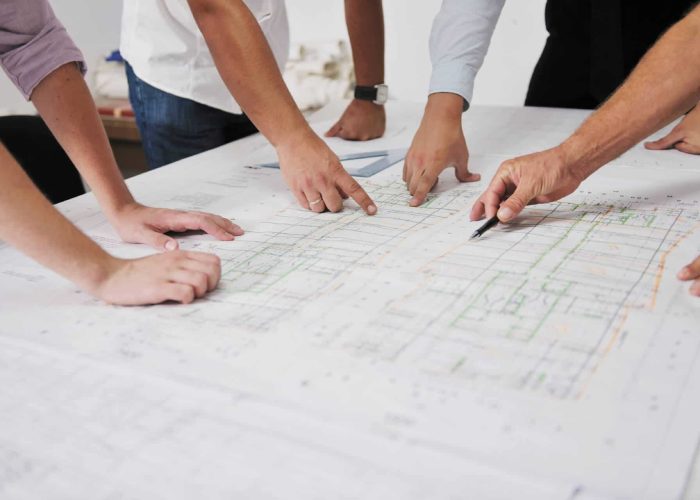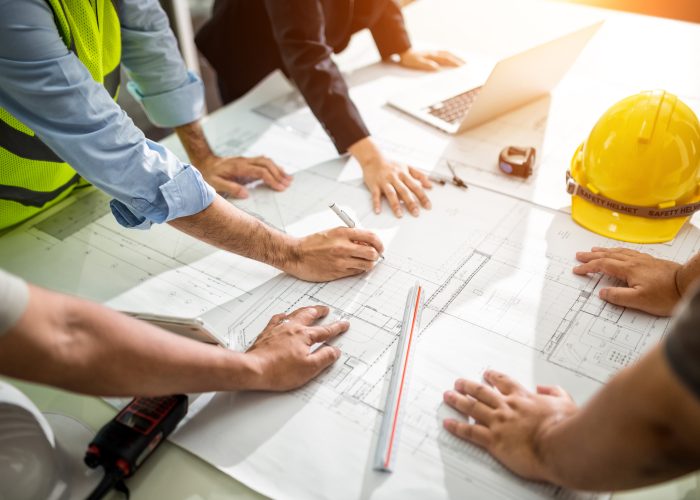5,000 Years of Tradition: An Introduction to the Design-Build Method
What do the Parthenon, the Florence Cathedral, and the Pentagon all have in common? They were all built using design-build construction! While those buildings may have been constructed over 5,000 years ago, it’s important to understand the history of design-build and its evolution to better understand its impact on the built environment.
Leon Battista Alberti, Architect of the Renaissance, said best, “It is never shameful to learn from any teacher things that are useful to know.” So, let’s dive into the history of design-build and learn more about how this integrated design and construction method has stood the test of time.
The Master Builder Approach: Early History and Key Projects
The master builder approach (known today as design-build) was a prevalent method employed in the ancient world, where individuals skilled in design and construction played a central role in creating significant structures. In this integrated approach, a master builder assumed responsibility for the entire process, from conceptualizing the design to overseeing the construction. This approach was particularly prominent in ancient civilizations such as Egypt, Greece, and Rome in constructing iconic buildings like the Pyramids, Parthenon, and Colosseum.
In the case of the Parthenon, built in the 5th century BCE, the master builder, Phidias, was a key figure. Phidias, renowned for his skills as a sculptor and architect, served as the overseer of the entire project. He conceptualized the architectural design and proportions of the temple and managed the coordination of skilled artisans, laborers, and resources required for its construction. The master builder’s involvement extended to overseeing the selection of materials, ensuring structural integrity, and incorporating intricate artistic elements.
The master builder approach in the ancient world was characterized by a holistic understanding of both the artistic and engineering aspects of construction. This integrated model facilitated efficient communication, problem-solving, and a seamless translation of design concepts into tangible structures. The success of master builders like Phidias in projects like the Parthenon exemplifies the effectiveness of this approach, where a single individual or a closely coordinated team could harmoniously blend design and construction expertise to create enduring architectural masterpieces.
For centuries, major building projects have used the master builder approach. Masterpieces of architecture and construction were completed using this method, including Djoser’s Steps, the Florence Cathedral, and the Ishtar Gate. It became known as the “gold standard” of construction because it ensured the master builder was solely responsible for ensuring their vision became a reality.
Specialization and the Transition from Design-Build Project Delivery
The design-build approach continued into the 18th and 19th centuries, but this period witnessed a gradual shift. With the growth of architectural education and the professionalization of the field, architects began focusing more on design, and contractors took on the role of construction. The separation of design and construction functions started to become more pronounced.
Then, with the rise of the Industrial Revolution, design-build procurement fell out of fashion. During that time, the building industry wasn’t focused on the quality of construction. Instead, it was focused on keeping up with demand. Additionally, the technical expertise required for designing industrial buildings meant designers needed an entirely different set of skills than builders. The increased complexity of projects led to a specialization of skills, with architects focusing on design, engineers on structural considerations, and contractors/project managers on execution. The result was a separation of designers, engineers, and constructors. Owners would choose a design from an architect and then bid out the construction to the lowest cost bidder. This method is now known as plan-spec or design-bid-build.
Related FAQ: What is the difference between design-bid-build and design-build projects?
This separation of designer and design-builder has consequences. Because owners contract with a designer and constructor separately, they must manage separate timelines and updates from each entity. As a result, owners spend more time and energy managing building projects. When mistakes are made during design-bid-build construction, the architect and general contractor are quick to blame one another. When there isn’t agreement on who is at fault, the architect and the constructor agree the cost should fall upon the owner.
Design-Build’s Modern Resurgence
The traditional design-bid-build model, with its distinct separation of design and construction responsibilities, often led to delays, increased costs, and communication challenges. In response to these inefficiencies, the master builder approach re-emerged as a solution. The shift toward design-build gained momentum in the post-World War II era, driven by a desire for faster project delivery, cost savings, and collaborative teamwork.
This marked a departure from the conventional model and led to the establishment of design-build firms and teams that could provide a seamless and coordinated approach from concept to completion. The rebirth of the master builder approach represented a paradigm shift in the construction industry, fostering collaboration, innovation, and a more holistic perspective on project delivery. Over time, the approach gained widespread acceptance and has become a well-established and widely adopted method in modern construction practices.
However, design-build construction isn’t the only approach that has become popular recently. The construction manager at-risk (CMAR) delivery method attempts to bridge the gap between traditional plan-spec limitations and design-build collaborative advantages. While this approach is typically faster than plan-spec, it doesn’t compare to design-build. And most importantly, it lacks a contractual relationship between the designer and the contractor. Because these two entities aren’t obligated to be on the same team, the owner is stuck in the middle to mitigate and resolve project issues. The resulting finger-pointing can lead to schedule impacts and budget increases. With the design-build method, everyone is on the same team, and the owner has no adversarial relationships to manage. Choosing the right team is one of the top factors in a project’s success.
FAQ: How Does Construction Manager At-Risk Differ from Design-Build?
Design-Build Project Examples
Several notable design-build projects have been completed in the last 30 years, showcasing the success and versatility of this project delivery method. The most notable in the United States may be the Pentagon Renovation. United States Department of Defense’s headquarters was a massive design-build undertaking. The project, initiated in the late 1990s and completed in 2011, involved the phased renovation of the Pentagon complex while maintaining its operational functions. The design-build approach facilitated the complex coordination required for such a large-scale renovation, ensuring minimal disruption to ongoing military operations. It was completed on time and budget.
Design-Build Today
Today, the design-build method continues to grow and is projected to account for up to 47% of non-residential construction spending by 2026. The benefits of design-build have made it a popular choice among owners who want collaboration, quality construction, and a fast project turnaround. And it’s not only for new construction. It is emerging as the top choice for complex or “messy” renovations to existing buildings that still need to operate during construction.
The Design-Build Institute of America was formed over 30 years ago to promote design-build as a construction delivery method and to define its best practices. As the approach evolves, the DBIA incorporates the best practices and innovations contributing to a successful and efficient project outcome. They provide certifications and continued learning for practitioners to ensure that design-builders continue to provide exceptional value to owners with this approach.
The Future of Design-Build
The future of design-build is expected to see continued growth and widespread use in the construction industry. With such growth, the benefits will remain unchanged: increased construction quality, controlled costs, and designs that meet the owner’s needs. Several key aspects indicate how design-build will evolve and be utilized in the future:
- Increased collaboration through technology: Augmented reality (AR) and artificial intelligence (AI) will further enhance collaboration. Virtual collaboration platforms and real-time data-sharing will become more sophisticated, allowing teams to work seamlessly across geographical boundaries.
- Integrating prefabrication and modular construction: Design-build will increasingly incorporate prefabrication and modular construction techniques. Off-site fabrication of building components can lead to faster construction timelines, improved quality control, and reduced waste.
- Greater emphasis on sustainability: Integrated teams will incorporate environmentally friendly materials, energy-efficient designs, and green construction practices to align with global efforts to address climate change and environmental concerns.
- Enhanced risk management strategies: This includes early identification and mitigation of potential risks through technologies like predictive analytics and scenario planning.
- Focus on resilient and smart infrastructure: The design-build approach will play a crucial role in developing smart and resilient infrastructure. Projects will incorporate technologies for safety, monitoring, and adaptability to changing environmental conditions.
Conclusion
Design-build has evolved from an ancient design and construction method to a modern, specialized procurement model. And that resurgence has brought a paradigm shift, emphasizing collaboration, efficiency, and innovation. As we navigate the complexities of contemporary construction, the history of design-build serves as a valuable guide. Looking ahead, its trajectory points toward continued growth, fueled by technological advancements, sustainability imperatives, and a commitment to seamless collaboration – ensuring that design-build remains at the forefront in shaping the built environment for future generations.
Ready to start building with us?
Our integrated team of architects, engineers, and project managers is ready to help with your next project. Contact us today for a collaborative, team-oriented approach to ensure your next new construction or renovation project succeeds.




